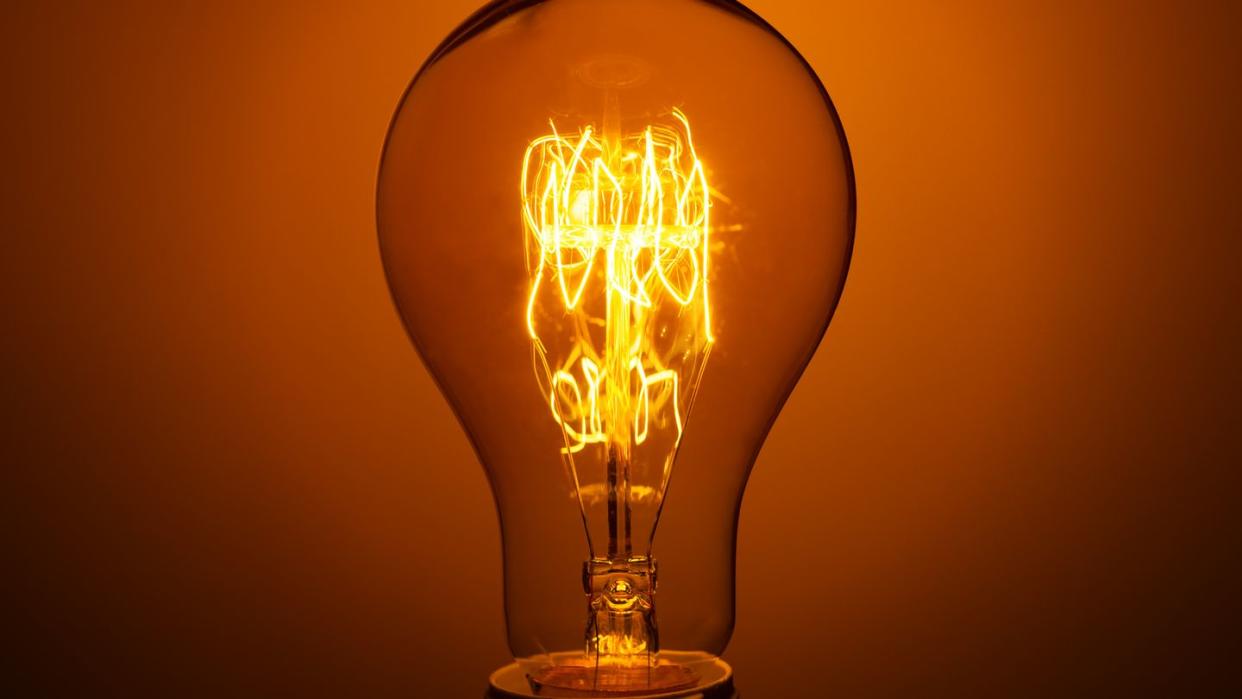Here’s Why You Won’t See Any Incandescent Light Bulbs on Store Shelves

"Hearst Magazines and Yahoo may earn commission or revenue on some items through these links."
Whether it's for your dining room or kitchen chandelier, your living room lamp or to illuminate that precious piece of historical-inspired lighting that has become a family heirloom, you’ll notice a different array of options in the light bulb aisle the next time you shop. As of August 1, 2023, after 16 years of bipartisan conversations, a luminosity-related law is finally a reality.
In 2007, former president George W. Bush started the discussions around phasing out incandescent light bulbs through his Energy Independence and Security Act. That legislation asked for bulb brands to offer options that have "about 25 percent greater efficiency," the United States Environmental Protection Agency (EPA) confirms. Ten years later, former president Barack Obama tacked on two more regulations, asking for incandescent and other specialty bulbs to be eliminated by January 2020.
Due to his feelings about the quality of lighting emitted from LED bulbs, in 2019, former president Donald Trump’s administration drew back the energy-efficient light bulb rule. Then, in 2022, president Joe Biden made Bush’s original propositions official. By April 2022, Biden and his Department of Energy declared that light bulb makers had until July 31, 2023 to phase out any bulbs that emitted less than 45 lumens per watt. (A lumen, by the way, is a measure of brightness.)
For reference, classic incandescent bulbs offer about 15 lumens per watt, which means that incandescent bulbs do not meet the energy efficiency criteria. Many LED bulb brands boast at least 70 lumens per watt.
Worth noting: All of the light legislation is enforced at the company level, rather than consumer level, so no one will stop you from using the bulbs you already own. Individuals are A-OK to use whatever bulbs they like and have for as long as they last. Incandescents generally die out far quicker than LEDs, the Energy Department says.
All of these bulb option adjustments aren’t meant to be a nuisance. Instead, they’re designed to save money and reduce the eco-impact of keeping homes bright. The Department of Energy reports that LED lightbulbs use at least 75 percent less energy and last up to 50 times longer than incandescent bulbs.
“By raising energy efficiency standards for lightbulbs, we’re putting $3 billion back in the pockets of American consumers every year and substantially reducing domestic carbon emissions,” U.S. Secretary of Energy Jennifer M. Granholm says in a Department of Energy statement.
The Department of Energy adds: "Over the next 30 years, the rules are projected to cut carbon emissions by 222 million metric tons—an amount equivalent to the emissions generated by 28 million homes in one year.”
This shouldn’t be a huge shift for most American homes. The 2020 Residential Energy Consumption Survey conducted by the U.S. Energy Information Administration found that about half of all U.S. households already opt for LED bulbs for most—if not all—of their indoor lighting.
Not all incandescent bulbs are getting the ax, however. The Department of Energy confirms that manufacturers can still make and sell incandescents for:
Appliance lamps (like the ones you’ll find inside your fridge and oven)
Black lights
Bug lamps
Colored lamps
Flood lights
Infrared lamps
Plant lights
Reflector lamps
Showcase lamps
Traffic signals
A handful of other specialty lightning styles, such as marine lamps and mine lamps
You Might Also Like

